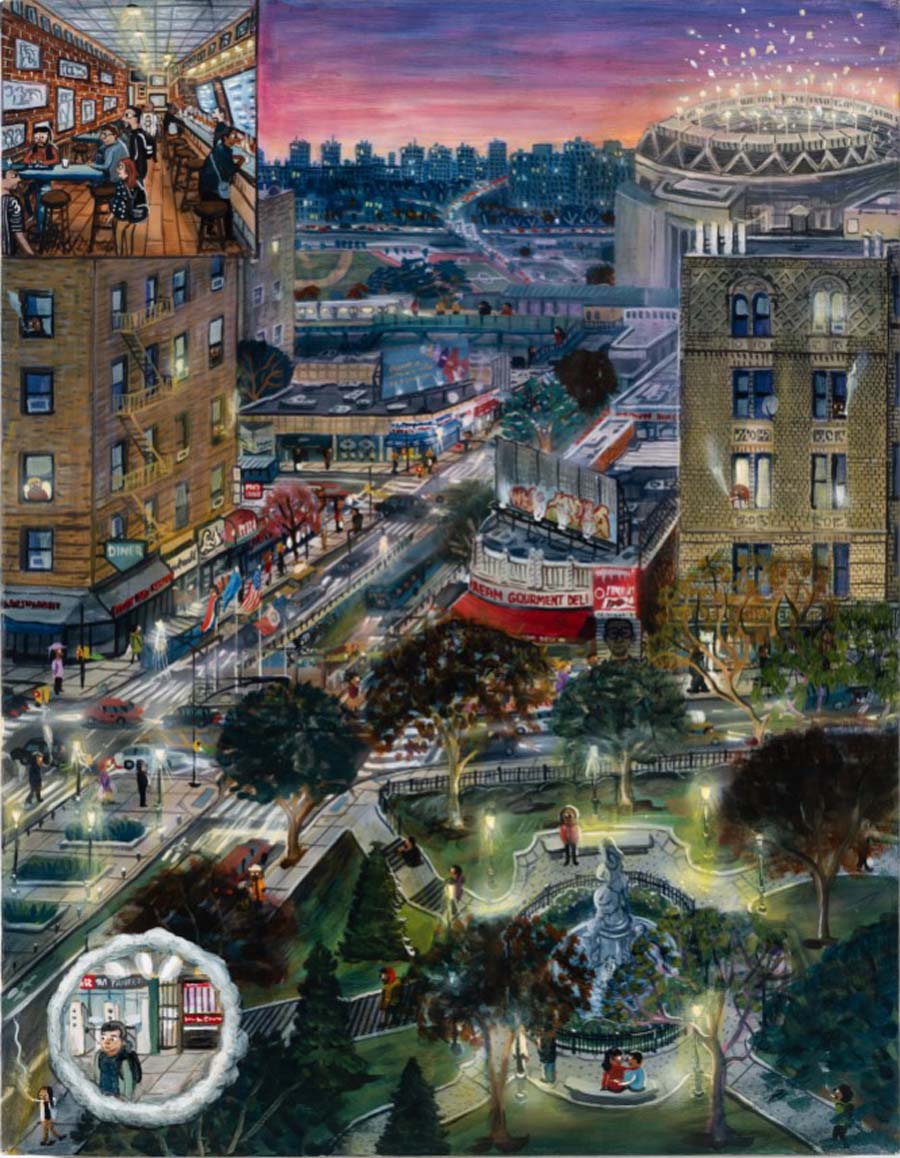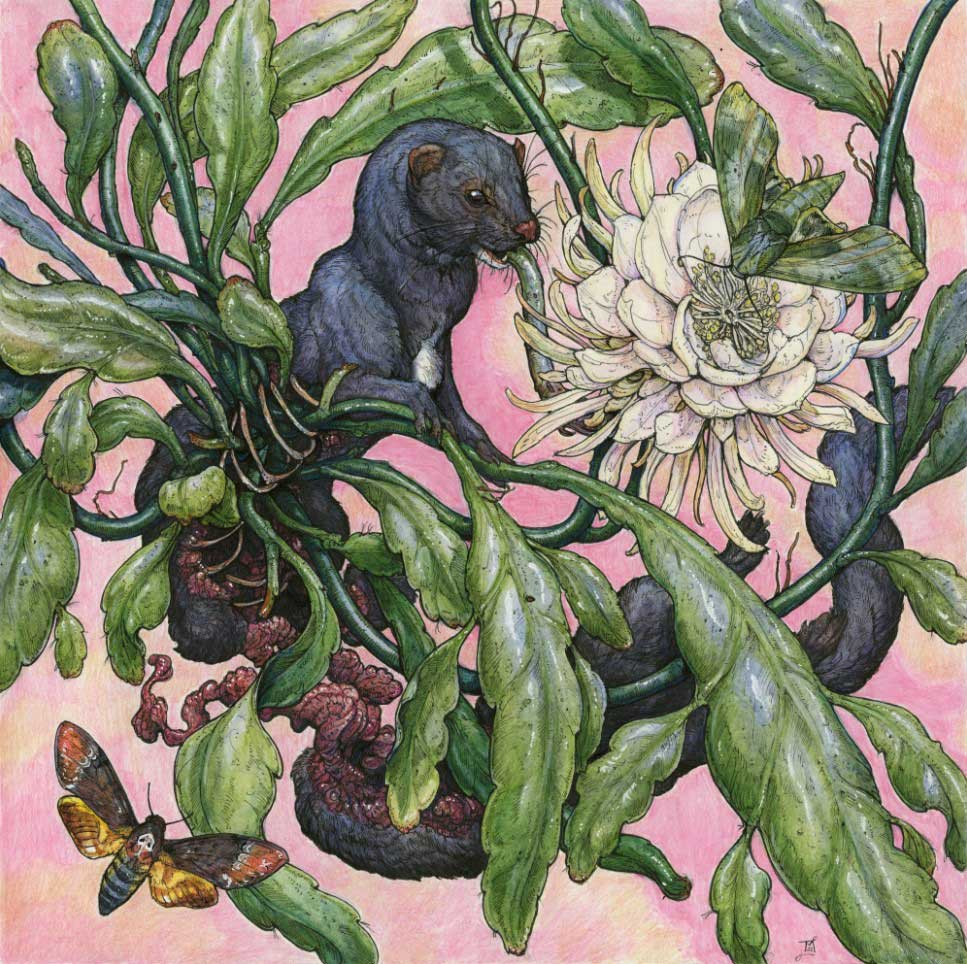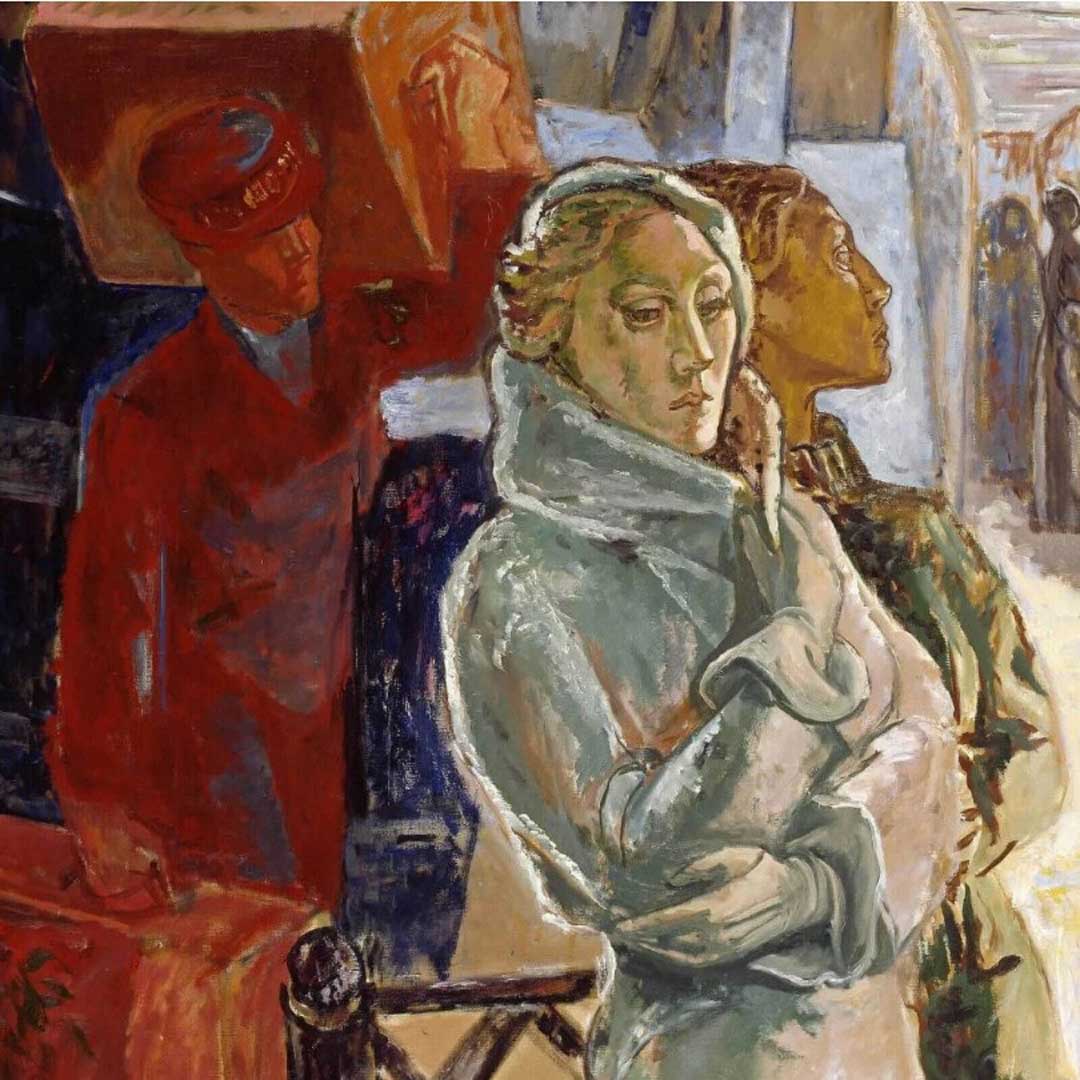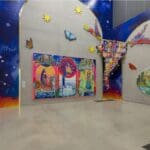In her pared-down, figurative paintings, often of a lone female, Asako Tabata presents a stark, unsettling vision of a society in which women have little chance to achieve autonomy. At first glance “A Wolf Is Coming!” (2023) seems to be the artist revisiting Aesop’s fable of “The Boy Who Cried Wolf.” The painting depicts what looks like a blue-haired adolescent girl standing against a Chinese red ground, with her hands at her side and an oval, representing an open mouth, on her otherwise featureless face.
There is no sign of a wolf in the painting. And yet, the Aesop reading doesn’t strike me as quite right. What are we to make of the ominous black cloud in the painting? Does it imply that dangerous forces are present? Does the open mouth suggest that she is crying for help or is the sound stuck in her mouth, unable to exit? The woman’s pose, her arms close at her sides, indicates that she is frustrated and frozen rather than, as in the fable, crying out in false alarm.
Featured image: Asako Tabata, “Why Should I Even Bother?” (2023), oil on canvas, acrylic on papier-mâché, wood board; painting: 28.6 x 71.7 inches; sculpture: 20.5 x 24.4 x 19.3 inches
Read the original article here… and return to discuss on artistvenu below















![Artist Shares Secrets of How To Draw Incredibly Realistic Portraits [Interview]](https://artistvenu.studio/wp-content/uploads/2023/12/Screenshot_242-150x150.jpg)
